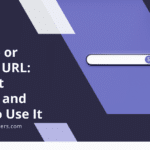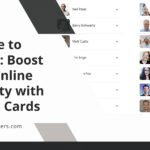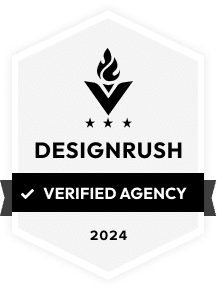
|
Getting your Trinity Audio player ready...
|
Digital marketing has become a crucial component of modern business strategies. As internet usage and social media platforms have grown, companies have adapted their approaches to align with evolving consumer behaviors. Digital marketing encompasses various online tactics, including social media marketing, search engine optimization (SEO), content marketing, and email campaigns.
These methods aim to engage potential customers in digital spaces where they spend significant time. The primary objectives of digital marketing are to expand reach, target specific demographics, and measure campaign effectiveness in real-time. By leveraging digital channels, businesses can access larger audiences and tailor their messaging more precisely than traditional marketing methods.
In the current digital era, consumers are continuously connected to the internet via mobile devices and computers. This constant connectivity provides businesses with unprecedented opportunities to engage potential customers at any time and location. Digital marketing enables highly personalized and targeted communication by utilizing data analytics to understand audience behaviors and preferences.
This level of customization often results in improved conversion rates and increased customer loyalty. As technology continues to advance, digital marketing techniques are becoming increasingly sophisticated. To remain competitive, businesses must stay informed about emerging trends and adapt their strategies to the rapidly evolving digital landscape.
Key Takeaways
- Digital marketing is a powerful tool for reaching and engaging with customers in the online space.
- A successful digital marketing campaign can be seen in the case study of Company X, which utilized social media, email marketing, and influencer partnerships to increase brand awareness and drive sales.
- Strategies and tactics such as targeted advertising, content marketing, and search engine optimization were crucial in the success of the campaign.
- Key performance indicators (KPIs) such as website traffic, conversion rates, and social media engagement were used to measure the success of the digital marketing campaign.
- Lessons learned include the importance of understanding your target audience, creating valuable content, and staying updated on the latest digital marketing trends. Future trends in digital marketing include the rise of artificial intelligence, voice search, and personalized marketing. Applying digital marketing to your business can lead to increased brand visibility, customer engagement, and ultimately, sales.
Case Study: Real-Life Example of Digital Marketing
Personalization and Social Media: A Winning Combination
In 2011, Coca-Cola launched a campaign that replaced its iconic logo with popular names on its bottles and cans. The goal was to encourage consumers to find a bottle with their name on it and share it with friends and family. The campaign was a massive success, generating a 2% increase in sales in the U.S. and a 4% increase globally.
Viral Sensation and User-Generated Content
Coca-Cola encouraged consumers to share their personalized bottles on social media using the hashtag #ShareACoke, which created a viral sensation. The campaign also included a website where consumers could customize their own virtual Coke bottles and share them online.
Creating a Sense of Community and Driving Sales
By tapping into the trend of personalized products and encouraging user-generated content, Coca-Cola was able to connect with consumers on a deeper level and create a sense of community around its brand. The campaign’s success demonstrates the power of digital marketing in creating engaging and shareable experiences that resonate with consumers.
Strategies and Tactics Used in the Campaign
The “Share a Coke” campaign utilized several key strategies and tactics to achieve its success. One of the main strategies was personalization, as Coca-Cola replaced its logo with popular names to create a sense of individuality and connection with consumers. This personalization extended beyond the physical product, as consumers were able to customize their own virtual Coke bottles on the campaign website.
This strategy tapped into the growing trend of personalized products and experiences, which resonated with consumers and encouraged them to share their personalized bottles on social media. Another key tactic used in the campaign was social media marketing. Coca-Cola leveraged popular social media platforms such as Facebook, Twitter, and Instagram to encourage consumers to share their personalized bottles using the hashtag #ShareACoke.
This user-generated content created a viral sensation, as consumers shared their personalized bottles with friends and family, further amplifying the reach of the campaign. By harnessing the power of social media, Coca-Cola was able to create a sense of community around its brand and generate widespread awareness and engagement.
Measuring Success: Key Performance Indicators (KPIs)
| Key Performance Indicator (KPI) | Description | Measurement |
|---|---|---|
| Customer Acquisition Cost (CAC) | The cost of acquiring a new customer | Total marketing and sales expenses / Number of new customers |
| Customer Churn Rate | The rate at which customers stop doing business with a company | (Number of customers at the beginning of the period – Number of customers at the end of the period) / Number of customers at the beginning of the period |
| Revenue Growth Rate | The rate at which a company’s revenue is growing | (Current period revenue – Previous period revenue) / Previous period revenue |
| Net Promoter Score (NPS) | Measure of customer loyalty and satisfaction | Percentage of Promoters – Percentage of Detractors |
The success of the “Share a Coke” campaign was measured through various key performance indicators (KPIs) that helped Coca-Cola track the effectiveness of its digital marketing efforts. One KPI that was used to measure success was social media engagement, including likes, shares, comments, and mentions related to the campaign. By monitoring social media engagement, Coca-Cola was able to gauge the level of consumer interest and interaction with the campaign, as well as track the reach and virality of user-generated content.
Another KPI used to measure success was sales data, which allowed Coca-Cola to track the impact of the campaign on its bottom line. By analyzing sales figures before, during, and after the campaign, Coca-Cola was able to attribute any increases in sales directly to the “Share a Coke” campaign. This data provided valuable insights into the campaign’s effectiveness in driving consumer behavior and purchasing decisions.
Lessons Learned and Best Practices
The “Share a Coke” campaign offers several valuable lessons and best practices for businesses looking to leverage digital marketing. One key lesson is the power of personalization in creating meaningful connections with consumers. By replacing its logo with popular names, Coca-Cola was able to create a sense of individuality and relevance that resonated with consumers on a personal level.
This level of personalization can be applied to various digital marketing tactics, such as email marketing and product customization, to create more engaging and impactful experiences for consumers. Another best practice from the “Share a Coke” campaign is the importance of user-generated content in driving engagement and virality. By encouraging consumers to share their personalized bottles on social media, Coca-Cola was able to create a sense of community around its brand and generate widespread awareness and buzz.
This user-generated content not only amplified the reach of the campaign but also provided valuable social proof and endorsements from real consumers.
Future Trends in Digital Marketing

The Rise of Artificial Intelligence in Digital Marketing
One significant trend is the increasing use of artificial intelligence (AI) and machine learning in digital marketing. AI-powered tools can analyze large datasets to provide valuable insights into consumer behavior and preferences, enabling businesses to deliver more personalized and targeted messaging.
Automation and Efficiency
AI can also automate repetitive tasks such as email marketing and customer service, freeing up time for marketers to focus on more strategic initiatives. This increased efficiency will be crucial for businesses to stay ahead in the digital landscape.
The Growing Importance of Video Content
Another key trend in digital marketing is the rising importance of video content. With the popularity of platforms like TikTok, Instagram Reels, and YouTube, video content has become an essential component of any digital marketing strategy. Businesses will need to invest in creating high-quality and engaging video content that resonates with their target audience to stay competitive.
Applying Digital Marketing to Your Business
In conclusion, digital marketing has become an essential tool for businesses looking to reach and engage with consumers online. The “Share a Coke” campaign by Coca-Cola serves as a prime example of how digital marketing can leverage personalization and social media to create engaging experiences that drive sales and brand awareness. By utilizing strategies such as personalization and tactics such as social media marketing, businesses can create impactful digital marketing campaigns that resonate with consumers on a deeper level.
As technology continues to advance, businesses will need to stay ahead of future trends in digital marketing such as AI and video content in order to remain competitive in the digital landscape. By applying best practices from successful campaigns like “Share a Coke,” businesses can harness the power of digital marketing to create meaningful connections with consumers and drive business growth.
If you are interested in learning more about digital marketing, you may want to check out this article on PPC services. This article provides valuable insights into the world of pay-per-click advertising and how it can be used as an effective digital marketing strategy.
FAQs
What is digital marketing?
Digital marketing is the use of digital channels, such as social media, search engines, email, and websites, to connect with current and prospective customers.
What are some examples of digital marketing?
Some examples of digital marketing include social media marketing, search engine optimization (SEO), email marketing, content marketing, and pay-per-click (PPC) advertising.
How does digital marketing differ from traditional marketing?
Digital marketing differs from traditional marketing in that it leverages digital channels and platforms to reach and engage with a target audience, whereas traditional marketing relies on offline channels such as print, television, and radio.
Why is digital marketing important for businesses?
Digital marketing is important for businesses because it allows them to reach a larger audience, target specific demographics, track and measure the effectiveness of their campaigns, and engage with customers in real-time.
What are the benefits of digital marketing?
Some benefits of digital marketing include increased brand awareness, higher website traffic, improved lead generation, better customer engagement, and a higher return on investment (ROI) compared to traditional marketing methods.

























































